Halfway through the year already. That means it’s time for June’s pastel jewels. Here’s another interesting mix of pastels chosen from the many I saw last month. I look forward to hearing your favourites. So let’s get on!

Although the title of this painting suggests a path in the woods, for me there’s a suggestion of so much more. With energetic marks, the artist suggests the vibrating of nature herself, the feeling that everything around us is imbued with spirit. We start off in a dark mass of roots but as we look forward and upwards, the path becomes lighter and slightly clearer. This could be a positive metaphor for our progress in reconnecting with nature and understanding her vital role in our own lives. It’s not an easy road to travel and there will be obstacles in our way but with determination, we’ll find a way through. The path is already there. Not a black pastel user myself, I like the way Lekich uses the colour boldly. I also like the rather abstract quality of this painting. Unfortunately, I couldn’t find a website to direct you to see more of Lekich’s work. I am hoping that will change and I will be able to post a destination soon.

I love this unusual viewpoint of an open hand holding a glass bowl with three eggs. As a painting, it offers much delight – the texture of the paper surface, the balance of warm-coloured skin against the cool background, the beautifully rendered hand as seen on both sides of the glass and created only with a few bold marks of pastel, the invisibility and yet solidity of glass. The title, however, suggests more than just the enjoyment of the physical painting. Do these three eggs represent something or some persons? Is the hand balancing the egg protecting them with a safe enclosure. Does the open hand represent an offering of love? Does the owner of the hand know that eggs are tougher than we think? So many questions to which we may create answers even without knowing what the artist’s own version is. See more of Jeri Greenberg’s work here.

I was intrigued by this painting. When I first came across it, what I saw was dead-looking trees against a stark and grey sky. As I looked further, I saw small bursts of colour placed over these trees which then led me upward to a mass of colour shapes at the top of the painting. It took me some seconds before I realized what I was looking at, autumn leaves gathered at the side of a puddle which was reflecting trees, sky, and land. There is a magic realism quality about how all these parts are rendered – you’re never quite sure if what you are looking at is indeed what is really there. I love this unexpected visual questioning. Again, another artist for which I could sadly find no website.

Rick Petersen has worked on a daily cloud challenge for 21 days. This is #12 and stopped me scrolling when I saw it. The smoothness of the wet sand reflecting the roiling mass of clouds, the greyness that is colourful, the contrast between the pleasure of rain and the fear of the violence of nature, the warmth that appears that should theoretically be cool with all the grey, the lightness of being this painting engenders in me, all these offer me a visual playground. There is silence yet also there is the sound of the distant surf and possibly a roll of thunder, there is immense space yet there is also the confinement of dense cloud, there is apparent simplicity yet there is complexity. This painting is tiny and yet, the numbers could just as well be in feet creating a massive enveloping bliss. You can see more of Petersen’s work on his website.

With an intense gaze, this man seems to be connected to someone or something beyond the picture. Is he about to speak? The slightly furrowed brow suggests a thought about to pronounce itself. Or is he just watching, possibly with some concern or consideration? The artist has captured a moment of tension. This isn’t a subject in a relaxed pose but one that’s not to be held for long, with uplifted eyes that will blink any second, and furrowed brow that will soften after a moment. I love the way the artist has captured the facial features with accuracy yet without an overabundance of detail. Soft light from behind illuminates the face while the shadow sides are warm with the glow of life. I love the way Panis has used the light to carve out the contour of the face and yet has avoided the harshness that can come with such lighting. Enjoy too the smallest indication of beard stubble on the chin and the silky texture of the wisps of hair. For now, all I can do is direct you to a Facebook profile to see more work.

It was quite something to select which of Suso Noya’s pastels to include here (I had collected four I think). In the end, I was taken by both the technical wizardry that presents such varying textures and by the possible narratives suggested in this painting. I can smell, almost taste, the metal of the tool as I reach to grasp the polished handle. I feel the coarseness of the twine, explore the smooth and rough parts of the cutting block, sense the contents within the cloth bag. This is a painting that hits all the sensations and is about those sensations. It also offers story – a simple set of objects put together in a way that says something about their relationship to each other. Is the scythe about to cut open the bag after cutting the string or is the twine there to tie the bag? From this point, where do we go? I like the way Noya has used contrapunto, contrasting dark against light, light against dark. I also like that this painting in greys and browns is enlivened all over by the red the artist used for the twine. See more of Noya’s work on his Facebook profile.

You don’t see a whole lot of line used in pastel paintings these days. Many use the more painterly way of applying pastel by using the side of the stick. So it was refreshing to come across this charming portrayal of a young girl (presumably with her mother) created primarily with lines of varying sizes, directions, and weight. I’m tickled by the many colours depicting the hair of the subject and that they are also seen in her skin and clothing. What’s really fascinating are the three boxes of marks on the right of the piece above the artist’s signature. They remind us that this is a 2D interpretation of a 3D subject and that the representation is created from a selection of colours applied in various ways. It’s kind of like the microphone that’s left in the picture frame of a movie – it reminds us we are watching something that is made to look like reality but isn’t. Click here to checkout more of Baffou’s work.

I am intrigued by this piece. It has a printmaking quality to it and looks almost like a silk screened print. The sepia and blue colours almost appear as inks rather than pastels. That and the abstract underpining of this work (two dark strips on each side with a light strip between them) present this piece as something more than a picture of a river with boats. There’s a sense of the past. It’s a painting that joins a story of a specific time and place with a more metaphorical or even mythical interpretation. This feeling is enhanced by the unusual colour choice and application, the depth of shadow, the ethereal distant light. To see more of Michel DeWaele’s work go to his Facebook profile.

As soon as I saw this painting, the work of John Twachtman came to mind! Click here to see what I mean. There is also something of Whistler’s pastels in the way Lisa Ransom Smith has used both the black pastel (or charcoal) underdrawing and the colour of the paper as vital parts of the whole. Look at the painting, it’s pretty much made up of cool and warm variations of green pastel strokes (with a small interspersing of blue and very light yellow). Her spare use of pastel colour and marks, and the deliberate allowance of the warm pinky/red paper colour showing through, leave the viewer with an erroneous feeling that the painting is created with many colours. I enjoy both the calligraphic tracings of the dark pastel as well as the energetic scribbling marks of the pastel. To see more of Smith’s work, go to her website.

What is it about this piece that keeps drawing me back? I love the way Roberta Condon has taken a plant and interpreted its essential parts into an abstracted painting. Calligraphic lines overlay two rectangular colour fields. Condon exhibits and exalts the Sumac plant against the unending space of sky and earth. The colour schemes of primarily greyed combinations of blues and reds in one rectangle and light greyed blues and yellows in the other, are punctuated and pierced by dashes and dots of saturated red rising upward. It is a joyous surface of mark-making and colour that celebrates the process of painting. You can check out more of Condon’s work here.
I hope you are inspired by June’s pastel jewels! I’d love to hear what you think of my selections so feel free to leave a comment.
Until next time,
~ Gail










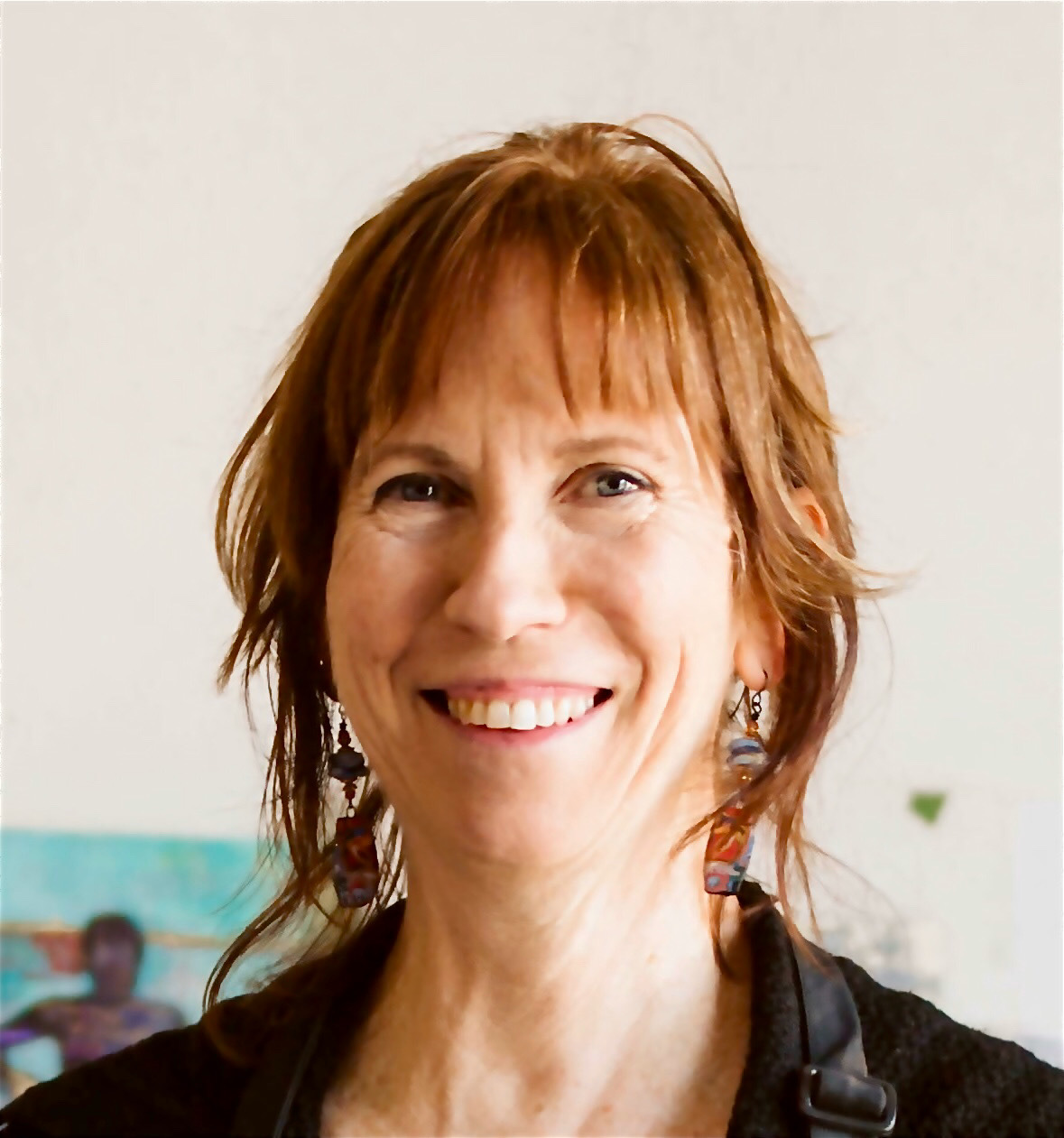
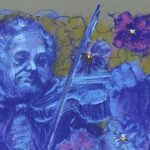

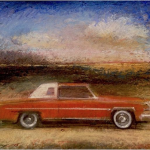



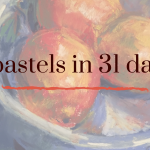

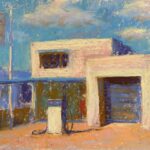
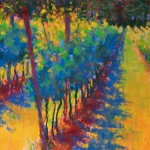

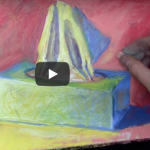
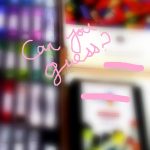

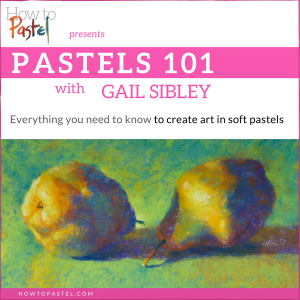

5 thoughts on “June’s Pastel Jewels – Be Inspired!”
These choices are amazing! I am particularly drawn to Ode to Sumac, Le Marais, …although…looking back again…each of them is so appealing…thanks for posting Gail!
Lorraine, I’m so happy you enjoyed the picks AND offered a couple of your favs. Thank you!!
I had to come back and look at these again. They are all so beautiful. I really enjoy the piece by Patrice Baffou. Can’t wait to see your next list.
Lisa, that’s wonderful of you to say! Thanks!!
Pingback: Breaking the Rules – a Sign of Maturity | Lisa Ransom Smith